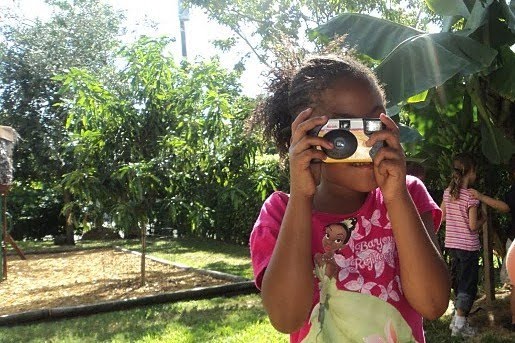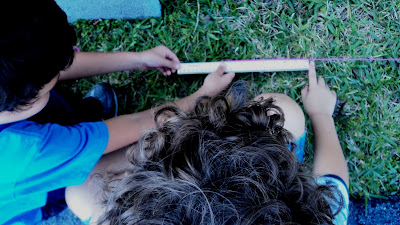Lately, I have been reminiscing about the great inspirations in my life- people, experiences, and the places that have allowed me to grow and blossom as a teacher with a passion for the arts. At my core, I am driven by a powerful need to listen and understand the essence of each individual being in my classroom. What lights them up inside? What worries them? What do they feel their strengths are academically and artistically, inside and outside of school? What do they feel their weaknesses are? What terrifies them, excites them, makes them want to scream out with joy!? The arts pull these truths forward. Art brings out all of the colors- some beautiful and some quite harsh, and can paint a magnificent picture of the whole human being. I literally live for teaching and getting to know what children need and want out of their school experience. I live for making their vision and dream become possible through setting up experiences, facilitating their exploration of possibilities, and offering up all of my energy in search to find the perfect materials and books to light that spark. I don’t mind if I feel drained and exhausted at the end of the day if my children feel full of life and inspiration. For the children have given me so much- unwavering patience, listening skills, and they have allowed me to experience beautiful moments with them as they laugh and marvel at every little wonder life offers up. Perhaps it is the listening skills I continue to refine throughout the time I spend with children that I am most grateful for. We all want to say we are great listeners, but listening is an art in and of itself, and it didn’t always come easy to me. I continue to train and refine this skill just like any craft an artist strives to develop.
Recently, I have been asked to think about my own experience with the dramatic arts. Of course drama is something I incorporate in my classroom daily, but I rarely think back to the methods I studied or MY life as an actor. I use drama to help bring learning to life with my kids, to motivate them, and provide opportunities for performance and culminating projects. So when a friend asked me to think of teaching drama in terms of the way I studied years ago in New York, I lost some sleep. The time I spent in college studying acting methods, in particular the Meisner Technique, was a tumultuous time of anxiety, excitement, confusion, self expression, and a great deal of self discovery. The goal was to “live truthfully under imaginary circumstances”. I was constantly struggling to truly comprehend who my characters were at their very core; understand the purpose behind each word they spoke, and every move they made. I put a great deal of effort into understanding the needs of my characters. Then, once I had done all of the work of character development, I was asked to put my characters on like second skin and live inside of them- leaving my old self alone as if I no longer existed as Jessica for the moment. Letting go of self consciousness completely and focusing every ounce of energy on what was going on around me in a new role was magical; reacting authentically to every stimulus in the scene as someone new was terrifying and exhilarating. All of this was completely overwhelming to me as I studied; however, in my teaching world now, this experience is a gift to be passed on and shared with others. During this time in my life I went through a transformation. I learned the first steps to truly listening. I learned to move beyond empathy to a point where I actually became someone new and understood a new life much different from my own, as if it were my own. It wasn’t until I got to step outside of my own life and experience the world from a new perspective that I truly got to know myself. Not only did I get to know who I was, but I started to pay close attention to the stimuli in my life I would react to daily, and I learned invaluable skills to gain control of my reactions through the practice I received while playing out similar situations in a make believe world.
Don’t we want our children to understand who they are, what they want out of their school experience, and how to react to negative and positive stimuli in their life in a healthy, appropriate way? Don’t we want them to develop a sense of empathy for “the characters” in their lives? Don’t we want them to understand the core of a character study, character motivation, and character development from an author’s standpoint? Isn’t it true that we want our children to be motivated to read, write, and invent new characters and situations? Don’t we want them to have a voice, and understand what drives them? Don’t WE want to understand what drives them? My training in the dramatic arts was trying, but that is what made it so precious. My experience in the education world is often trying, but our success stories are pure magic. I look forward to facilitating a deep exploration of this artistic craft with my students as a tool to learn empathy for others and to gain a better understanding of themselves in the context of their lives. It is a key to motivating young readers and writers, and I believe it is an extraordinarily powerful tool.
The link below will lead you to an article that “sings to my soul” as a teacher. It is the foundation of how I teach literacy, encouraging drama and inventive spelling
I am a drama person. My training in drama inspired me to teach. I believe that drama can give children strength, confidence, and motivation. Perhaps most importantly, it gives them the tools they need to READ and WRITE and make meaning of what they read and write.
The plays we create and perform in our classroom are intentional tools I use to give children a deep understanding of reading and writing.
We all know that there are many “senses” of the term literacy being kicked about the discursive landscape of education and culture. To me, literacy has to do with powerful ways of understanding and interpreting a world invented by and structured by print. This is the world of contracts, news, laws, sacred texts, dictionaries, and declarations. It is the world of prose, poetry, and drama. It is equally the world of formulas, calculations, blueprints, and maps. It is a planned world, a constructed world, a world built out of words. It is a world that, once constructed, gives us ideas about words, and, through words, gives us ideas about ourselves. It behooves us to understand the world made out of words, or as Olson has said, the “world on paper.” I consider the acquisition of literacy to be a gradual process of "demythologizing" the world made on paper by print. We learn to see how this world is constructed by people who are functioning within social, cultural, and political spheres and to realize that we could be one of those creators of the worlds on paper just as easily as the next person. This realization exposes the arbitrariness of power within this dynamic and realigns the controlling functions exerted by print. For example, the dictionary loses its "mythic" authoritative status as the final word on meaning or spelling or pronunciation when understood to be the product of teams of people combing through other texts to first produce the work and only to revise it periodically as meanings, pronunciations, and spellings change.
To help children see how they can be co-constructors of these worlds of meaning -- either through engagement with someone else's text or through their own production of a text -- is the task of literacy education. I have found that learning to "read" dramatic productions of texts and to monitor our reactions to performances of those texts (either our own or those of others) provides an access to expanding literacy.
What of the elementary school and children who are just learning to cope with written texts? What does sophisticated theatergoing have to do with their emergent literacy? Think of kids as audiences for bedtime story readings. Think of kids as natural actors in touch with very pure emotional resources. Think of them as powerful meaning-makers ready to observe that the king has no clothes. Situate them in a relation to meanings as producers rather than consumers. And what have we got? A head start on literacy of all kinds.
Carol Chomsky very cogently argues that writing is more accessible than reading for young children. Among her reasons is the observation that the child's relation to meaning differs in the two tasks. For reading, meanings are unknown to the child, while in writing meanings originate with the child. Thus, when children come to read their own writing, they already know the meanings and can spend some cognitive time exploring (and gradually discovering) how what is read is organized to represent the meanings that it does. She made a similar argument when called in to the Randolph schools to address a problem they had with some of their fourth graders. These children had learned to decode, that is, they were successful with phonics tasks in isolation. However, they still could not read. She aptly asked: After Decoding: What? Her answer seemed somewhat surprising -- memorize. But in light of altering one's position to meaning, it makes perfect sense. If children were helped to memorize whole texts (as actors do), just like beginning writers, they would already know the meanings encoded in the print. Cognitive space could then be freed up to explore how the text said what it did. Thus, any kind of re-instruction in letter-sound systems could be built upon their prior knowledge of those texts.
This is what we do. This is why first grade readers can write words for characters they create like “We must use our wisdom and responsibility”, and then be able to read back the words fluently and with intention. They are able to do this because they have actively participated in the creation of the text. It is breathtaking to watch children become active participants in the construction of their own knowledge. BREATHTAKING!
M's sketch of her costume and character traits
M's brainstorm for "Save the Earth"
E loves the song "Heal the World" by Michael Jackson. He wrote a piece to the tune of the song.
E's rough draft of "Save the Earth"
Z highlighting her lines
"The Girls" rehearsing their lines
This picture is from our first play. "The Strange Land of Dragons". This piece dramatically changed the way the children worked together collaboratively. It taught them how to listen to each other, share ideas, and cope with social/emotion issues through the use of characters that faced obstacles. The confidence, poise, and sense of responsibility this play gave to E was AMAZING. He followed through with his first play to the very end. He even made programs and designed costumes with the help of his incredibly gifted mother.







































